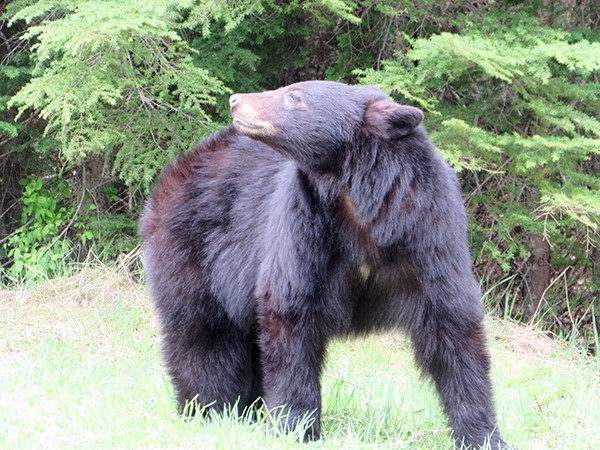A common misconception is that conservation officers are quick to kill Squamish bears, but that’s not the case, according to recently released figures.
In 2015, out of 545 calls for service made to the conservation office, a total of eight bears were killed, according to the Sea to Sky Zone Conservation Officer Service. One cub was sent to rehab, and 19 bears were hazed during the same period.
Hazing means chasing the bears away, according to conservation officer Sgt. Simon Gravel. For example, if a bear is on a school’s grounds, the officers would come and yell and chase it away, he said. In other cases, the officers may fire beanbag cartridges at the bear to scare it so it moves, he added.
“Squamish is a Bear Smart community, so there’s a lot of initiatives to reduce the human cause of wildlife conflict,” Gravel said, noting the district’s waste management plans that include bear-proof garbage totes. “There’s a lot of work that is done in the Sea to Sky Corridor not to kill bears, of course, because the community has a high cultural tolerance of black bears and we value them and want to cooperate with our surroundings to live in harmony with wildlife.”
Squamish has a new WildSafe BC coordinator, Vanessa Isnardy, who took over the position that former coordinator Tanner Field left last fall. Isnardy will be continuing bear aware education and outreach by attending community events, as well as conducting school and preschool programs and door-to-door education.
When officers must kill a bear, it is usually a situation in which a bear has become a risk to the public, “like a bear trying to break into an occupied house or building,” Gravel said. “You can imagine nobody wants a bear visiting their kitchen in their house. It brings a potential situation that is very concerning.”
A bear that shows predatory behaviour, such as attacking pets or charging people in a residential area, may also be killed, he said.
A final reason for killing a bear is if it’s causing substantial damage to property, according to Gravel. “At some point, there’s a limit to what we can tolerate of a bear breaking into stuff. I have seen bears creating thousands of dollars of damage to garage doors and garbage totes and all over the place being very, very persistent, trying to access food.”
People can help protect the local bear population through their own behaviour, Gravel said. For example, people should not stop and feed or take pictures of bears along the highway.
“We understand there’s a lot of visitors and they hope to see a bear in our corridor when they travel by, but it is a problem,” he said. “A bear that is habituated to the roadside like this gets habituated to the cars, and then it creates a behaviour that is not suitable for the bear’s own safety.”
The good news, though, according to Gravel, is black bears seem very resilient and tolerant of urban development so should withstand the district’s current development boom as long as enough green space is maintained to let the bears access berries in the summer and fish in the fall.
“Our wildlife corridors are well preserved, in general,” Gravel said. “But it brings the importance to have initiatives in place to ensure our encroachment on their territory doesn’t lead the bear to be in conflict with our presence.”
Gravel said the conservation office has yet to find out who shot and killed a bear in the Garibaldi Highlands on April 20. Anyone with information about this incident or any wildlife interaction is asked to call 1-877-952-7277.



